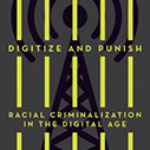Lights, Camera, Execution! Cinematic Portrayals Of Capital Punishment

Authors: Helen J. Knowles, Bruce E. Altschuler, and Jaclyn Schildkraut
Publisher: Lanham, MD: Lexington Books, 2019. 185p.
Reviewer: Inez Hedges | May 2021
In 1972 the United States Supreme Court, citing the arbitrary results of juries, voided all the death sentences of prisoners then on death row. Between 1972 and 1976, a moratorium was placed on death sentences while states worked out new trial procedures. As the authors explain in their introduction, in 1976 two innovations allowed states who opted for the imposition of the death penalty to proceed: a new bifurcated jury system that separated the guilty verdict from sentencing and allowed the defense to present mitigating factors before sentencing; and an outright prohibition on mandatory death sentences (Gregg vs. Georgia and Woodson v. North Carolina).
This well-researched and informative book takes up in kaleidoscopic fashion the issues that still surround the imposition of the death penalty since 1976. In its own way, the book is also bifurcated: each film is discussed in its own right as a vehicle that arouses the viewer’s empathy and engagement, and also serves as a springboard for consideration of the legal, social, and historical issues it brings up. Briefly, these can be summarized as: the disparities in sentencing due to race and class (Murder in Coweta County, 1983; A Lesson Before Dying, 1999); the fallibility of the judicial system that can lead to the sentencing and execution of the innocent (The Thin Blue Line, 1988; The Life of David Gale, 2003); the question of whether any form of execution by the state constitutes “cruel and unusual punishment” outlawed by the Constitution (The Chamber, 1996; The Green Mile, 1999); the humanity of a convicted murderer vs. the inhumanity of the state’s imposition of the death penalty (Dead Man Walking, 1995; Last Dance, 1996; The Green Mile); the trauma experienced by the executioners themselves (The Green Mile; Monster’s Ball, 2002).
In A Lesson Before Dying, an innocent black youth is condemned to death after being caught in the company of two black men as they robbed and murdered the local shopkeeper. The black schoolteacher comments: “a white man’s been killed, and a colored boy has to die.” The chapter goes on to examine “the troubling relationship between race and capital punishment that persists today” (89), a legacy of the 1987 Supreme Court decision McCleskey vs. Kemp which refused to acknowledge racial bias in a capital punishment case. The authors note that as of today black and Hispanic people still make up nearly 60% of all death row inmates. Murder in Coweta County, on the other hand, is a re-enactment of a the trial and execution in 1948 of John Wallace, a rich white landowner from Georgia who considered himself so far above the law that he thought he could kill one of his white tenant farmers with impunity. The case illustrates the issues of race and class, the authors state, because of the defendant’s wealth and also because “this was one of the rare occasions in which a white man was convicted in the Jim Crow South primarily on the testimony of two African American witnesses” (26). In general, “America does not execute wealthy defendants” who can afford to hire competent lawyers (25).
One argument that death penalty opponents use concerns the possibility of executing the innocent. Errol’s Morris’ examination of the evidence against the death row prisoner Randall Duke Adams in The Thin Blue Line led to the condemned man’s exoneration and release. The authors comment, “The judicial system failed Adams by incarcerating an innocent man for a dozen years and coming close to executing him” (47). In The Life of David Gale, Kevin Spacey plays the main character, an activist against the death penalty, who frames himself for a murder he did not commit and is executed; his point is to demonstrate that the system can wrongfully convict an innocent man. The authors point out that the State of Illinois, where Randall Duke Adams was incarcerated, declared a moratorium on executions in 2000 after 13 death row inmates had been exonerated; it repealed the death penalty law in 2011. Today, twenty states do not have the death penalty. Executions are highest in the south; Texas leads with 561—37.4 percent of the nation’s total since 1976 (5).
Legal battles surrounding the method of carrying out the death penalty are highlighted in films that present graphic depictions of executions gone awry. The Green Mile has two scenes of electrocution in which the condemned men’s bodies start smoking; in the second, horrific scene of intentional cruelty administered by a sadistic guard, the man’s body even catches fire. In their discussion of The Chamber, the authors bring out the fact that there have been so many problems with lethal injection that several states since 2015 have introduced the gas chamber (119).
Several films seek to elicit audience identification with the condemned by stressing their humanity. The Last Dance, the only film about the execution of a woman, dramatizes the relationship between her and her attorney, and shows that no one should be defined by the worst act they commit. The discussion of the film brings up the question of gender on death row; since 1976 only sixteen women, or 1.1 percent of the total, have been executed (133). In the course of the film, the audience is encouraged to identify with Cindy and her evolving relationship with her attorney. Nevertheless, at the end, after a brief respite and hope for a stay, her appeal is denied and the execution proceeds. At the time of its release in 1996, The Last Dance was unfavorably compared to Dead Man Walking, which had garnered an Oscar for Susan Sarandon that year. Based on the writings of Sister Helen Prejean, Dead Man Walking humanizes the convicted killer Matthew Poncelet, an avowed racist, while also portraying the suffering of victims’ families. Lastly in this category, The Green Mile presents the somewhat fantastical story of an imposing black defendant accused of the double murder of two children on the farm where he worked. In the course of this more than 3-hour film (based on a novel by Stephen King), it turns out that the innocent defendant has magical healing powers and that he was holding the dead girls in a failed attempt to bring them back to life. Like Dead Man Walking, this film was a huge commercial success. The point of all three films is to elicit audience identification with the executed prisoners, which may sway public opinion away from support of the death penalty.
The last category, the effect of carrying out the death penalty on the executioners, is not a legal issue but one that explores the larger impact of state-sanctioned killing. In both Monster’s Ball and The Green Mile, carrying out executions proves to be too traumatic for the guards, who leave their jobs. The chapter on Monster’s Ball also lays out different studies that have demonstrated the physical and emotional toll that capital punishment places on the families of the condemned.
The academic specialties of the three authors—criminal justice professor Jaclyn Schildkraut, political science professor Helen Knowles, and film scholar Bruce Altschuler, lead to a fruitful collaboration. What’s missing perhaps is a little more attention to film form. The Life of David Gale plays with the idea of the unreliable narrator as effectively as Hitchcock’s 1950 Stage Fright. Music plays a major role in The Last Dance, especially perhaps the lyrics from the song “The Gift” by Annie Lennox which plays over the credits: “The room is full of silence and it’s getting hard to breathe/ Take this gilded cage of pain and set me free/ Take this overcoat of shame/ It never did belong to me.” Point of view shots in Murder in Coweta County are skillfully used to portray the townspeople’s change of heart about Wallace. The ending of Monster’s Ball is, I think, more ambiguous than the authors allow.
The book’s overall emphasis is on the way each film illustrates a problem; brief plot summaries are followed by extensive legal and social commentary, making the book useful for college courses. In such a course, a good assignment might be to imagine films about issues not yet treated here, such as jury selection (which can eliminate jurors who are against the death penalty); mass mobilization on behalf of individual prisoners (such as the journalist Mumia Abu Jamal) that have led to their removal from death row; the scope and activities of the Innocence Project; and potentially the impact of the Black Lives Matter movement on future cases. According the a Gallup poll cited by the authors, support for the death penalty has slipped from 77 percent in 1995 to 55 percent in 2017 (63). Because executions are now carried out with only a select group of witnesses, films like the ones discussed in this book are a valuable way to raise awareness and keep the issues surrounding capital punishment alive in public discourse.
Inez Hedges is Northeastern Professor Emerita of Cultures, Societies and Global Studies


